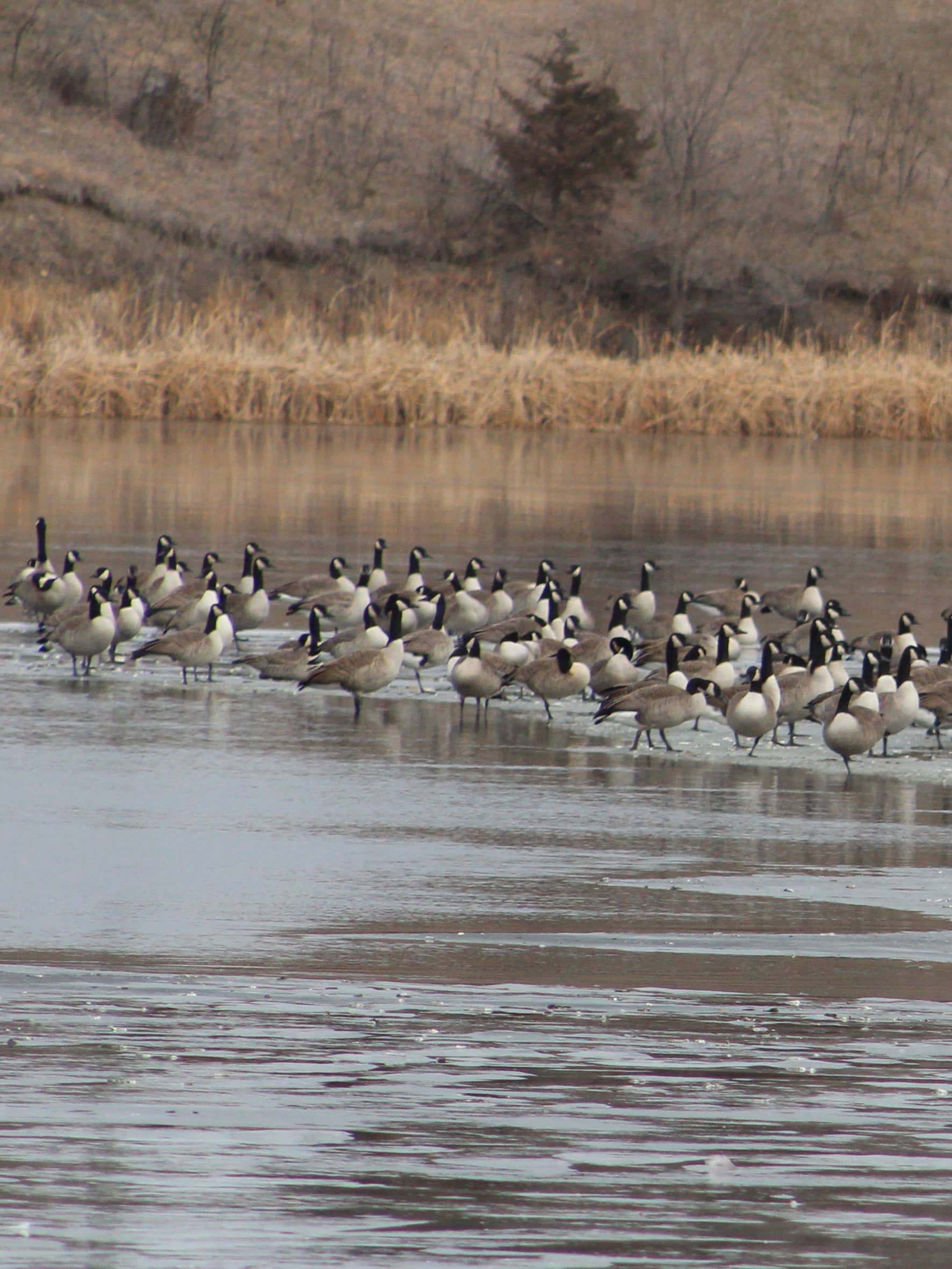
Very Thin Ice. Migrating geese will linger in a stretch of open water slowing the formation of solid ice in that staging area and impacting thickness from one spot to another under the first coating of snow. Simonson Photo.
By Nick Simonson
The lure of that first ice fishing opportunity has lost some of its pull on me.
Where in the past I’d be one of the first anglers sliding out onto the newly-formed ice, these days I’m more comfortable taking my time getting out there. In part due to my cautious nature, having felt the chill of ankle, thigh, and knee-deep winter waters in my younger years, and also due my love for late-season pheasant hunting which usually ends when the ice is more than stable for a stroll out to my favorite spots, I typically don’t fire the auger up as early as I once did.
I’ve also seen my share of shoulder-shrugging moments in the past two decades as one year a series of parked trucks and trailers went into a Minnesota lake at an early winter event, and gasped at headline-grabbing instances of anglers who disappeared through the ice when on foot, side-by-side or pickup truck. Whether a close call, or something more serious, this time of year brings with it unstable ice, and accidents waiting to happen. No ice is one hundred percent safe at any time of year, but it’s a guarantee those odds are even worse as fall wanes into winter, and there are a number of factors that influence how a water’s surface freezes.
Recent winters have taken their time in settling in across the region, and where once many sportsmen were forced to make the difficult choice between tagging their deer or setting the hook on some big early ice walleyes, autumns have typically been warmer and a mix of freezing and thawing has been standard in November and December. With those warmer temperatures also comes a mix in precipitation. Just this evening I finished out a sit on my bow stand in the rain, photographing the odd late November rainbow on the hillside behind me. The combination of temperatures above freezing and more frequent late autumn rains slow down ice formation, and weaken that which makes up the already-set surface.
Additionally, as those warmer conditions become a more normal occurrence, waterfowl like ducks and geese stay longer on the bodies of water that anglers love to fish at first ice. Holding out on, and sometimes even patrolling those last open stretches on a lake, geese can facilitate open water, and weaken surrounding ice right up until that first sub-zero night forces them into the rest of their migration. Once they depart and a dusting of snow falls, it’s tough to tell where they were and where the ice has just formed. In the shallows of fishable sloughs, ponds and bends in the river, creatures like beavers can also impact the way water freezes with their lodges and dams changing the flow and drawing in warmth with their dark tops.
Finally, man-made influences can hinder good ice formation this time of year and can continue to impact ice safety all winter. Culverts and drains can pump meltwater and warm runoff into lakes and rivers, weaking the ice around their entry points anytime things get above freezing or those late season rains come instead of snow. Bridges, piers and other man-made structures connecting shorelines or jutting out into the water can also slow down ice formation around them.
Avoiding obvious areas of issue like pressure ridges, inflowing creeks and aerated stretches of a lake are table stakes when it comes to ice safety. Keeping these additional elements front of mind as well this time of year is crucial when inspecting that first set up of hardwater on a lake or slough. Whether it’s just to avoid a chilly dip, or to prevent a more serious loss of property or life, know that all ice is never safe ice and early ice is often the least safe.
This fact of formation and all of these factors which influence it remain good reasons to tread extremely carefully or delay those early forays by a week or two, if the allure of some great late season hunting isn’t enough for you…in our outdoors.
